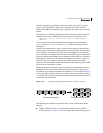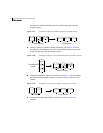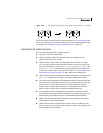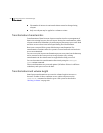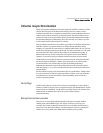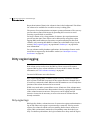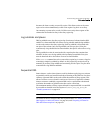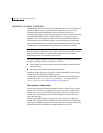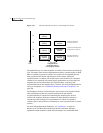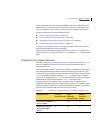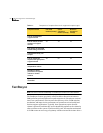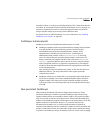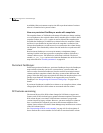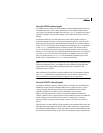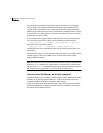
63Understanding Veritas Volume Manager
Volume snapshots
Redo log volume configuration
A redo log is a log of changes to the database data. Because the database does not
maintain changes to the redo logs, it cannot provide information about which
sections require resilvering. Redo logs are also written sequentially, and since
traditional dirty region logs are most useful with randomly-written data, they
are of minimal use for reducing recovery time for redo logs. However, VxVM can
reduce the number of dirty regions by modifying the behavior of its dirty region
logging feature to take advantage of sequential access patterns. Sequential DRL
decreases the amount of data needing recovery and reduces recovery time
impact on the system.
The enhanced interfaces for redo logs allow the database software to inform
VxVM when a volume is to be used as a redo log. This allows VxVM to modify the
DRL behavior of the volume to take advantage of the access patterns. Since the
improved recovery time depends on dirty region logs, redo log volumes should
be configured as mirrored volumes with sequential DRL.
For additional information, see “Sequential DRL” on page 61.
Volume snapshots
Veritas Volume Manager provides the capability for taking an image of a volume
at a given point in time. Such an image is referred to as a volume snapshot. Such
snapshots should not be confused with file system snapshots, which are point-
in-time images of a Veritas File System.
Figure 1-31 illustrates how a snapshot volume represents a copy of an original
volume at a given point in time. Even though the contents of the original volume
can change, the snapshot volume can be used to preserve the contents of the
original volume as they existed at an earlier time.
The snapshot volume provides a stable and independent base for making
backups of the contents of the original volume, or for other applications such as
decision support. In the figure, the contents of the snapshot volume are
eventually resynchronized with the original volume at a later point in time.
Another possibility is to use the snapshot volume to restore the contents of the
original volume. This may be useful if the contents of the original volume have
become corrupted in some way.
Note: If you choose to write to the snapshot volume, it may no longer be suitable
for use in restoring the contents of the original volume.



